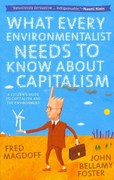Answered step by step
Verified Expert Solution
Question
1 Approved Answer
17. Consider a small open economy with fixed prices and wages. Consumption de- mand depends positively on disposable income, investment demand depends negatively on the
 17. Consider a small open economy with fixed prices and wages. Consumption de- mand depends positively on disposable income, investment demand depends negatively on the domestic interest rate i. Government spending and taxes are exogenous. Net exports NX are negatively related to income Y and the nominal exchange rate E, where E is the foreign price of domestic currency. The demand for money Mo/P = L(Y, i) is positively related to income Y and nega- tively related to the interest rate i. The money supply MS is exogenous. Capital mobility is perfect, and balance of payments equilibrium requires i = i", where i* is the foreign interest rate, which is positive to begin with. Throughout this question, the government has a flexible exchange rate policy. (a) [2 marks] Suppose the government wants to boost GDP and first considers increasing the money supply. Analyse the effects of this using the IS-LM-BP diagram. Does monetary policy succeed in raising GDP? (b) [2 marks] After the policy change in part (a), the government considers cut- ting taxes. Analyse the effects of this using the IS-LM-BP diagram. Does fiscal policy succeed in raising GDP? Money demand Md/P = L(Y, /) becomes perfectly interest elastic at i = 0. (c) [4 marks] Explain what shape the LM curve takes when i = 0 and sketch the LM curve, considering points where i = 0 as well as those with i > 0. Suppose there is a global recession. Central banks around the world cut interest rates to zero. (d) [2 marks] Analyse the effects of i* falling to zero using the IS-LM-BP diagram. (e) [3 marks] Do your conclusions from part (a) still apply if the government de- cides to increase the money supply? Carefully explain your answer, showing the effects of a larger money supply on the LM curve obtained in part (c). (f) [2 marks] Following on from the money supply increase in part (e), explain whether a tax cut would succeed in boosting GDP. Does your conclusion from part (b) still hold
17. Consider a small open economy with fixed prices and wages. Consumption de- mand depends positively on disposable income, investment demand depends negatively on the domestic interest rate i. Government spending and taxes are exogenous. Net exports NX are negatively related to income Y and the nominal exchange rate E, where E is the foreign price of domestic currency. The demand for money Mo/P = L(Y, i) is positively related to income Y and nega- tively related to the interest rate i. The money supply MS is exogenous. Capital mobility is perfect, and balance of payments equilibrium requires i = i", where i* is the foreign interest rate, which is positive to begin with. Throughout this question, the government has a flexible exchange rate policy. (a) [2 marks] Suppose the government wants to boost GDP and first considers increasing the money supply. Analyse the effects of this using the IS-LM-BP diagram. Does monetary policy succeed in raising GDP? (b) [2 marks] After the policy change in part (a), the government considers cut- ting taxes. Analyse the effects of this using the IS-LM-BP diagram. Does fiscal policy succeed in raising GDP? Money demand Md/P = L(Y, /) becomes perfectly interest elastic at i = 0. (c) [4 marks] Explain what shape the LM curve takes when i = 0 and sketch the LM curve, considering points where i = 0 as well as those with i > 0. Suppose there is a global recession. Central banks around the world cut interest rates to zero. (d) [2 marks] Analyse the effects of i* falling to zero using the IS-LM-BP diagram. (e) [3 marks] Do your conclusions from part (a) still apply if the government de- cides to increase the money supply? Carefully explain your answer, showing the effects of a larger money supply on the LM curve obtained in part (c). (f) [2 marks] Following on from the money supply increase in part (e), explain whether a tax cut would succeed in boosting GDP. Does your conclusion from part (b) still hold

Step by Step Solution
There are 3 Steps involved in it
Step: 1

Get Instant Access to Expert-Tailored Solutions
See step-by-step solutions with expert insights and AI powered tools for academic success
Step: 2

Step: 3

Ace Your Homework with AI
Get the answers you need in no time with our AI-driven, step-by-step assistance
Get Started


